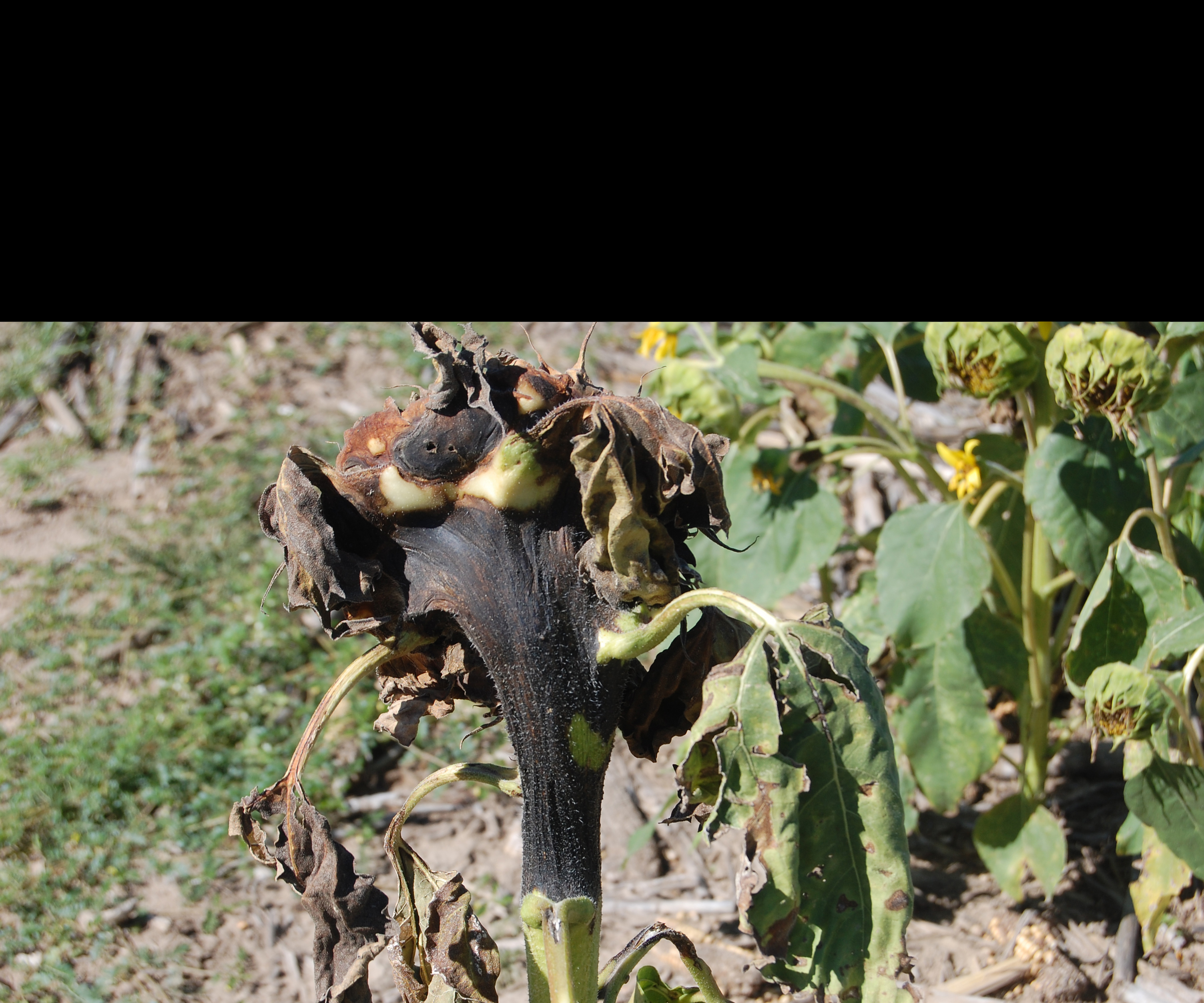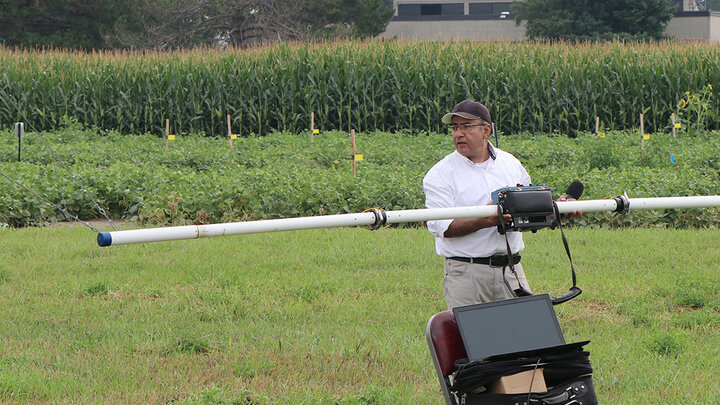By Robert Harveson, Extension Plant Pathologist
Pathogen
Fungal structures: mycelium, sporangia, and sporangiospores. Several species of the genus Rhizopus have been implicated in causing head rot, including R. arrhizus A. Fischer, R. stolonifer (Ehrenb.:Fr.) Vuill., and R. microsporus Tiegh. It has historically been considered to be of minor importance, however, it was documented as causing severe losses in Israel, and a recent survey of sunflower diseases in California found that Rhizopus head rot was the most common disease of sunflower. Under favorable conditions, it caused 100% losses in certain fields in the High Plains. Infection is initiated in heads through wounds created by hail, birds, or insects.
Disease Symptoms
Symptoms first become noticeable as dark spots on the back of ripening heads, followed by a watery soft rot that later turns brown. As disease progresses, heads dry prematurely, shrivel, and tissues appear to shred. Inside shredded tissues, coarse, thread-like mycelial strands are observed, followed by the appearance of small black dots (sporangia). Sporangia are filled with spores that are easily released and wind-blown to other plants. Symptoms on the flower side of heads include the appearance of mycelium, a grayish, fuzzy substance that is covered with sporangia.
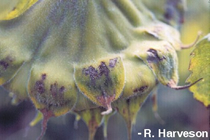
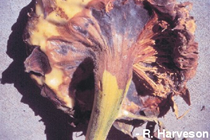
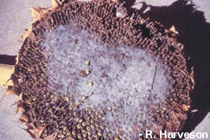
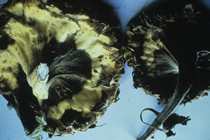
Favorable Environmental Conditions
Some type of mechanical injury on the head in combination with high temperatures and high relative humidity are required for infection and disease progress. Damage and economic losses are dependent upon time of the season that wounding and infection occurs. Infection rarely occurs before flowering, and greatest yield reductions result when infection occurs before seeds are properly filled. Infection in Israel has been primarily attributed to wounds from bird feeding. In the High Plains, disease is initiated through head moth infestations and severe storms with hail.
Management
Genetic Resistance
No resistant cultivars are available, but cultivars with more upright heads are more susceptible to infection.
Cultural Practices
Disease problems can be reduced by controlling the head moth at or before flowering, and by avoiding mechanical wounding after flowering. It is also important to rogue or control volunteer and wild sunflowers before they produce seed; they may serve as a reservoir for insects and the Rhizopus pathogen.
Chemical/Biological Control
No chemical or biological control measures are available.
Links
For additional information, see the Nebraska Extension NebGuide, Rhizopus Head Rot of Sunflower in Nebraska (G1677).
